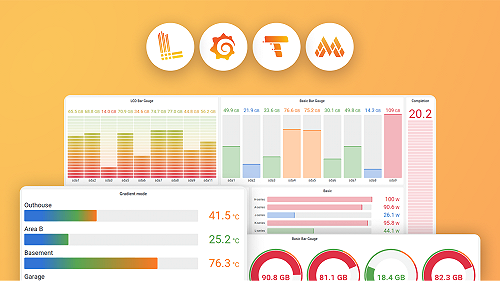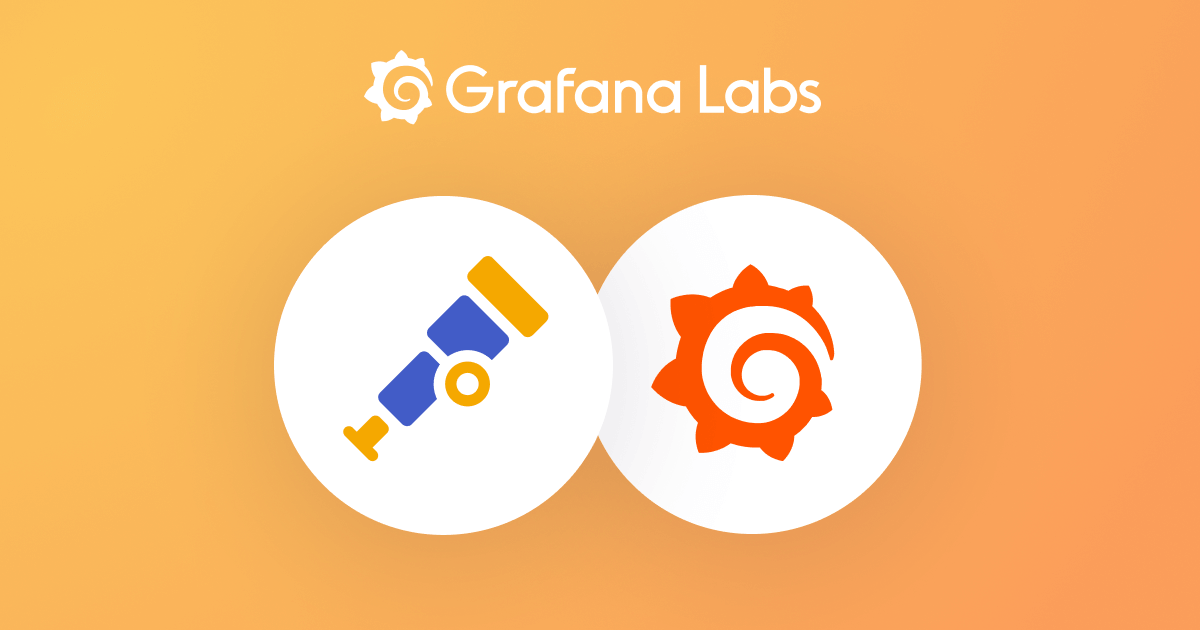Plugins 〉Logz.io
The Logz.io plugin has been deprecated and is no longer maintained.
Logz.io
Logz.io data source for Grafana
This plugin is a copy of the Elasticsearch datasource with custom headers.
At the time of release, custom headers for http datasources have not been merged to the Grafana project. This is a temporary solution until the custom headers are pulled into Grafana.
Before you start
To complete this procedure, you'll need:
- Write access to your Grafana server
- Logz.io API access
To configure Logz.io as a Grafana data source
Fork or clone the grafana-logzio-datasource repository from GitHub.
Copy
grafana-logzio-datasource/dist/to the Grafana server atvar/lib/grafana/plugins/<folder_name>/. It doesn't matter what you name<folder_name>.Restart Grafana.
In Grafana, open your Configuration, and click Add data source.
Enter these settings:
| Section | Field name | Value |
|---|---|---|
| Name | Custom data source name (This is the Data Source you'll use for your Grafana graphs.) | |
| Type | Logz.io | |
| HTTP | URL | https://api.logz.io/v1/elasticsearch (US Accounts) or https://api-eu.logz.io/v1/elasticsearch (EU Accounts) |
| Custom Headers | Key | X-API-TOKEN |
| Value | Your Logz.io API token | |
| Elasticsearch details | Index name | Custom name |
| Time field name | @timestamp |
When you're done, click Save & Test. If the test passes, you can now use Logz.io as a data source.
To use Logz.io as a data source, select a Logz.io source from the Data Source list in any Grafana graph. (This is the Custom data source name that you set in step 5.)
Grafana Cloud Free
- Free tier: Limited to 3 users
- Paid plans: $55 / user / month above included usage
- Access to all Enterprise Plugins
- Fully managed service (not available to self-manage)
Self-hosted Grafana Enterprise
- Access to all Enterprise plugins
- All Grafana Enterprise features
- Self-manage on your own infrastructure
Grafana Cloud Free
- Free tier: Limited to 3 users
- Paid plans: $55 / user / month above included usage
- Access to all Enterprise Plugins
- Fully managed service (not available to self-manage)
Self-hosted Grafana Enterprise
- Access to all Enterprise plugins
- All Grafana Enterprise features
- Self-manage on your own infrastructure
Grafana Cloud Free
- Free tier: Limited to 3 users
- Paid plans: $55 / user / month above included usage
- Access to all Enterprise Plugins
- Fully managed service (not available to self-manage)
Self-hosted Grafana Enterprise
- Access to all Enterprise plugins
- All Grafana Enterprise features
- Self-manage on your own infrastructure
Grafana Cloud Free
- Free tier: Limited to 3 users
- Paid plans: $55 / user / month above included usage
- Access to all Enterprise Plugins
- Fully managed service (not available to self-manage)
Self-hosted Grafana Enterprise
- Access to all Enterprise plugins
- All Grafana Enterprise features
- Self-manage on your own infrastructure
Grafana Cloud Free
- Free tier: Limited to 3 users
- Paid plans: $55 / user / month above included usage
- Access to all Enterprise Plugins
- Fully managed service (not available to self-manage)
Self-hosted Grafana Enterprise
- Access to all Enterprise plugins
- All Grafana Enterprise features
- Self-manage on your own infrastructure
Installing Logz.io on Grafana Cloud:
Installing plugins on a Grafana Cloud instance is a one-click install; same with updates. Cool, right?
Note that it could take up to 1 minute to see the plugin show up in your Grafana.
Installing plugins on a Grafana Cloud instance is a one-click install; same with updates. Cool, right?
Note that it could take up to 1 minute to see the plugin show up in your Grafana.
Installing plugins on a Grafana Cloud instance is a one-click install; same with updates. Cool, right?
Note that it could take up to 1 minute to see the plugin show up in your Grafana.
Installing plugins on a Grafana Cloud instance is a one-click install; same with updates. Cool, right?
Note that it could take up to 1 minute to see the plugin show up in your Grafana.
Installing plugins on a Grafana Cloud instance is a one-click install; same with updates. Cool, right?
Note that it could take up to 1 minute to see the plugin show up in your Grafana.
Installing plugins on a Grafana Cloud instance is a one-click install; same with updates. Cool, right?
Note that it could take up to 1 minute to see the plugin show up in your Grafana.
Installing plugins on a Grafana Cloud instance is a one-click install; same with updates. Cool, right?
Note that it could take up to 1 minute to see the plugin show up in your Grafana.
For more information, visit the docs on plugin installation.
Installing on a local Grafana:
For local instances, plugins are installed and updated via a simple CLI command. Plugins are not updated automatically, however you will be notified when updates are available right within your Grafana.
1. Install the
Use the grafana-cli tool to install Logz.io from the commandline:
grafana-cli plugins install The plugin will be installed into your grafana plugins directory; the default is /var/lib/grafana/plugins. More information on the cli tool.
Alternatively, you can manually download the .zip file for your architecture below and unpack it into your grafana plugins directory.



